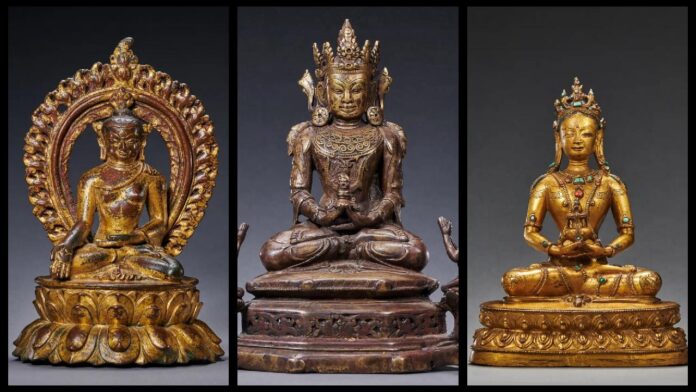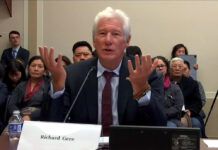(TibetanReview.net, Sep27’21) – China’s National Cultural Heritage Administration has announced Sep 26 in a video conference that it would transfer 12 pieces of cultural relics and artworks retrieved from the US to the Tibet Museum in Tibet Autonomous Region. There will obviously be no attempt to find out which temples and monasteries they originally belonged to with a view to return them there simply because most of Tibet’s religious centres, numbering well over 6,000 – according to the exile Tibetan administration at Dharamsala – were destroyed during the Chinese invasion of Tibet and under the occupation rule.
The report also brings to mind the Chinese plundering of Tibet’s religious centres of their centuries- to millennia-old religious artifacts, especially from the Potala palace. There has never been even an attempt to make an index of the priceless losses. While much of the losses in eastern Tibetan took place just after the founding of the People’s Republic of China in late 1949, most of the plundering happened after the 1959 violent suppression of Tibetan uprising, especially during the Cultural Revolution of 1966-76.
According to Chinese experts, the 12 artifacts are mainly from Ming and Qing dynasties (1368-1911), six of which are precious cultural relics, including five gold and bronze Buddha statues and one gilded bronze crystal tower made with excellent craftsmanship, reported China’s official globaltimes.cn Sep 27. This does not mean that the artifacts belonged to those two dynasties, but simply that they originated in Tibet during the period China was under the rule of these dynasties.
Given China’s obsession to Sinicize everything Tibetan, the report also said, “In particular, a brass statue of the Buddha from the end of the Ming and early Qing dynasties, shows a prominent Han-Tibetan fusion style. Its hexagonal pedestal is mostly seen in Han-Tibetan style thangka and murals but is relatively rare among bronze statues.” Han-Tibetan style thangka?
As to how the cultural relics “returned to China”, the report said: “According to China’s National Cultural Heritage Administration, information was received back in March that a batch of suspected Chinese cultural relics and artworks had been seized by the Manhattan District Attorney’s Office in the US. The pieces were later confirmed to be illegally smuggled Chinese relics after verification. On April 15, the administration issued a repatriation notice to the US which later agreed to return the relics. On July 16, the 12 pieces of cultural relics and artworks arrived in Beijing safely.”
Countless cultural relics plundered from Tibet by Chinese invaders were suspected to have been smuggled to black markets in Hong Kong and elsewhere.
Calling the “return” another successful cooperation between the two countries, the report said, “As both China and the US are the contracting parties of UNESCO’s Convention on the Means of Prohibiting and Preventing the Illicit Import, Export and Transfer of Ownership of Cultural Property, the US returned multiple batches of cultural relics to China in March 2011, December 2015, and February 2019.”
The Tibet Museum is the largest comprehensive museum in Xizang (Chinese name for Tibet) and its new exhibition will open soon. The batch of 12 cultural relics and artworks will be displayed as a collection on the opening of the museum’s new exhibition, the report said.






